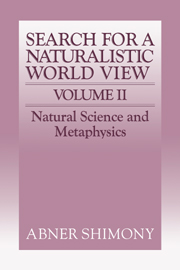Book contents
- Frontmatter
- Contents
- A MEASUREMENT IN QUANTUM MECHANICS
- B QUANTUM ENTANGLEMENT AND NONLOCALITY
- 7 Experimental test of local hidden-variable theories
- 8 An exposition of Bell's theorem
- 9 Contextual hidden variables theories and Bell's Inequalities
- 10 Controllable and uncontrollable non-locality
- 11 Events and processes in the quantum world
- 12 An exchange on local beables
- 13 Physical and philosophical issues in the Bohr–Einstein debate
- C COMPLEX SYSTEMS
- D TIME
- E THE MENTAL AND THE PHYSICAL
- Index
9 - Contextual hidden variables theories and Bell's Inequalities
Published online by Cambridge University Press: 05 June 2012
- Frontmatter
- Contents
- A MEASUREMENT IN QUANTUM MECHANICS
- B QUANTUM ENTANGLEMENT AND NONLOCALITY
- 7 Experimental test of local hidden-variable theories
- 8 An exposition of Bell's theorem
- 9 Contextual hidden variables theories and Bell's Inequalities
- 10 Controllable and uncontrollable non-locality
- 11 Events and processes in the quantum world
- 12 An exchange on local beables
- 13 Physical and philosophical issues in the Bohr–Einstein debate
- C COMPLEX SYSTEMS
- D TIME
- E THE MENTAL AND THE PHYSICAL
- Index
Summary
Noncontextual hidden variables theories, assigning simultaneous values to all quantum mechanical observables, are inconsistent by theorems of Gleason and others. These theorems do not exclude contextual hidden variables theories, in which a complete state assigns values to physical quantities only relative to contexts. However, any contextual theory obeying a certain factorisability condition implies one of Bell's Inequalities, thereby precluding complete agreement with quantum mechanical predictions. The present paper distinguishes two kinds of contextual theories, ‘algebraic’ and ‘environmental’, and investigates when factorisability is reasonable. Some statements by Fine about the philosophical significance of Bell's Inequalities are then assessed.
INTRODUCTION
In most of the discussions of Bell's Inequalities little notice is taken of the historical circumstances of their discovery. J. S. Bell was told by J. Jauch of the work of A. Gleason [1957] which showed that simultaneous values cannot be assigned to all observables of a quantum mechanical system in a way that respects their algebraic structure (except in the simple case in which the relevant Hilbert space has dimension less than three). Gleason's theorem thus precludes a type of hidden variables theory that has come to be called ‘noncontextual’. The question of agreement between the statistical predictions of quantum mechanics and those of a noncontextual hidden variables theory does not even arise, since such a theory cannot be consistently formulated.
- Type
- Chapter
- Information
- The Search for a Naturalistic World View , pp. 104 - 129Publisher: Cambridge University PressPrint publication year: 1993
- 1
- Cited by



